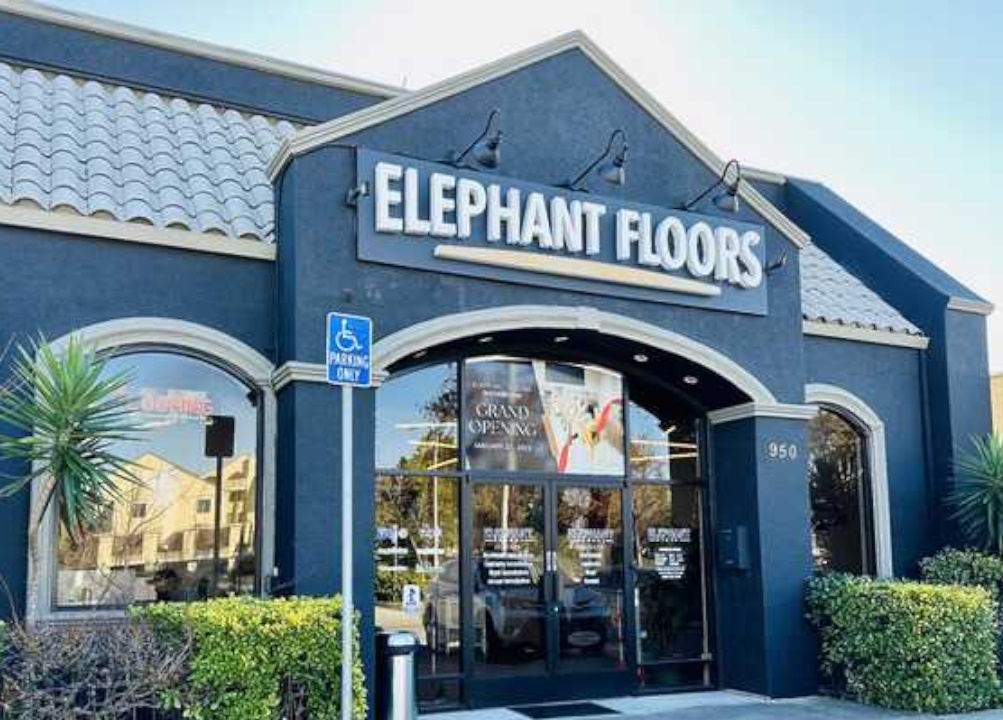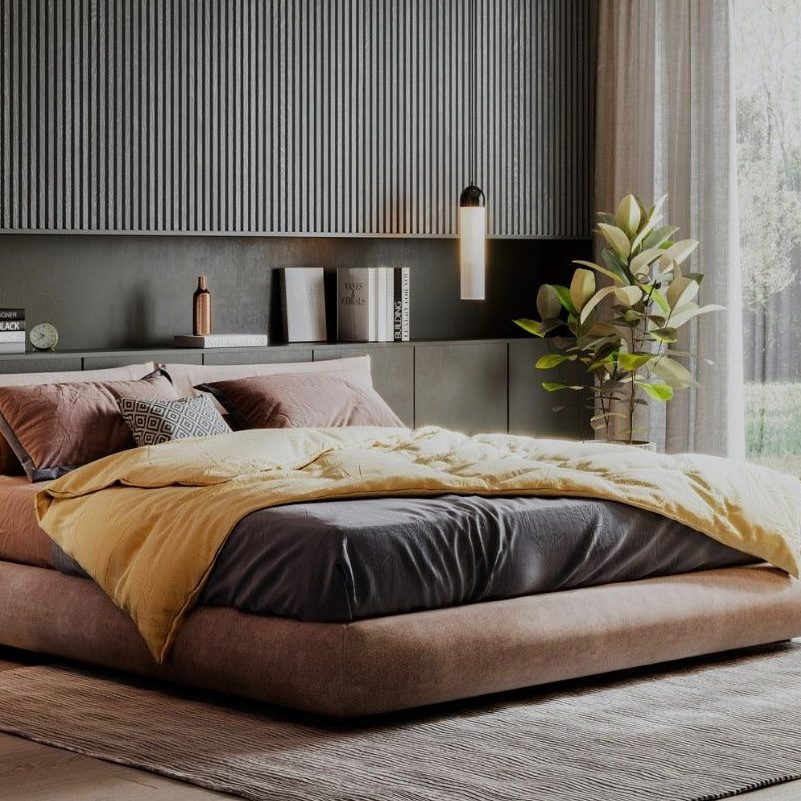- September 11, 2024
When it comes to enhancing the beauty and functionality of your home, flooring is a crucial element to consider. There are many options available, from classic hardwood to versatile vinyl. Making the right choice can significantly impact the aesthetic and comfort of your home. Choosing the right flooring reflects your style. It ensures durability and ease of maintenance.
This article delves into the enduring debate between hardwood and vinyl flooring. We compare the features, benefits, and drawbacks of these flooring types.
Hardwood vs. Vinyl | Pros & Cons
Pros and Cons Summary
Hardwood Flooring | Vinyl Flooring | |
Pros | – Timeless aesthetic appeal | – Affordable and budget-friendly |
– Increases home resale value | – Moisture and water resistant | |
– Durable and long-lasting with proper care | – Easy to install and maintain | |
– Can be refinished to remove scratches and wear | – Available in a variety of styles and patterns | |
– Biodegradable and recyclable if sustainably sourced | – Resistant to stains and easy to clean | |
Cons | – Higher initial cost | – Less authentic look compared to real wood |
– Requires regular maintenance and refinishing | – Can be less durable in high-traffic areas compared to high-quality options | |
– Vulnerable to moisture damage and scratching | – Can be less durable in high-traffic areas compared to high-quality options | |
– Installation can be complex and may require professionals | – VOC emissions can affect indoor air quality |
Overview of Hardwood Flooring
Hardwood flooring is a timeless choice known for its natural beauty and durability. It is made from solid wood, offering a rich, warm appearance that adds elegance to any space. There are two primary types of hardwood floors: solid hardwood and engineered hardwood.
- Solid hardwood consists of planks made from a single piece of wood. It provides longevity and the ability to be refinished many times.
- Engineered hardwood is constructed with a top layer of wood veneer over multiple layers of plywood. It enhances its stability and resistance to moisture.
Common species of wood used in hardwood flooring include oak, maple, and cherry. Each offers unique grain patterns and color variations. Oak is prized for its durability and classic look, while maple is known for its subtle grain and light hues. Cherry has rich, deep tones. These options allow homeowners to choose a hardwood floor that best complements their interior design.
Overview of Vinyl Flooring
Vinyl flooring is a versatile and cost-effective option. It is known for its durability and ease of maintenance. Vinyl flooring is made from synthetic materials. It mimics the appearance of natural wood, stone, or tile. This flooring provides a wide range of aesthetic options. Vinyl flooring comes in several types, including luxury vinyl planks (LVP), vinyl tiles, and sheet vinyl.
- LVP is known for its realistic wood-like appearance and ease of installation.
- Vinyl tiles offer a modular approach that is ideal for DIY projects.
- Sheet vinyl provides a seamless look and is often used in areas with high moisture levels.
Innovations in vinyl flooring have led to waterproof options and highly realistic designs. These advancements make vinyl flooring an attractive choice for homeowners. They offer a stylish, resilient, and affordable flooring solution that can withstand daily wear and tear.
Cost Comparison
Hardwood flooring typically ranges from $6 to $15 per square foot. It depends on the wood species and quality. Vinyl flooring is more affordable, averaging between $2 to $7 per square foot.
Installation costs highlight this difference; hardwood installation can be complex and labor-intensive. It often requires professional assistance, which adds $3 to $8 per square foot. In contrast, vinyl installation is simpler and can be a DIY project. It reduces labor costs to as low as $1 to $3 per square foot if professionals are hired.
Long-term cost considerations also play a crucial role in decision-making. While hardwood floors cost much higher, they can last for decades with proper care. They add value to a home. However, they require refinishing every 7-10 years and are susceptible to scratches and water damage. It can need costly repairs. Vinyl flooring, while less durable and prone to wear over time, is more resistant to moisture and easier to replace in damaged sections.
Durability and Longevity
Hardwood flooring boasts an impressive lifespan. It often lasts 50 years or more with proper care. The wood species, the finish quality, and the level of maintenance influence its durability. Regular refinishing can rejuvenate hardwood. It helps withstand high traffic, pets, and other wear and tear. Hardwood flooring is vulnerable to moisture and scratches.
Also Read: Hardwood Floors vs. Carpet: Which is Right for You?
Vinyl flooring lasts 10 to 20 years, depending on its quality and the foot traffic it endures. Advances in technology have improved vinyl resilience. Luxury vinyl plank (LVP) and vinyl tile (LVT) offer enhanced durability compared to traditional options. Vinyl is particularly resistant to water and stains. It’s suitable for areas prone to spills or moisture, such as kitchens and bathrooms.
Foot traffic, pets, and maintenance levels affect the durability of both hardwood and vinyl flooring. High-traffic areas wear down both types, but hardwood may need more frequent refinishing. Pets can scratch hardwood, while vinyl is more resistant. Regular cleaning and maintenance maximize their lifespan and maintain their aesthetic appeal.
Aesthetic Appeal and Home Value
Visually, hardwood flooring offers a natural, timeless beauty that many homeowners find irresistible. Each hardwood plank is unique with its grain, color, and texture. It adds character and warmth to any space.
Vinyl flooring is realistic in its imitation of wood and other natural materials. However, it generally lacks the depth and authenticity of hardwood. Modern luxury vinyl plank and tile options have significantly improved appearance. They offer a wide range of designs. They can closely mimic the look of hardwood, stone, and other premium materials.
Hardwood flooring often enhances a property’s marketability. It can fetch a higher selling price. Buyers tend to favor the elegance and durability of hardwood. It can make a home more attractive and competitive in the real estate market. Vinyl flooring, while cost-effective and visually appealing, does not typically add the same level of value. However, its affordability and low maintenance can still be attractive. Budget-conscious buyers or those seeking a more practical flooring solution prefer vinyl.
Both hardwood and vinyl offer versatility in design and style options. Hardwood comes in various species, finishes, and plank sizes. It allows for a range of looks from rustic to contemporary. Vinyl provides even greater flexibility. It can suit any decor style with many colors, patterns, and textures.
Environmental Impact
Hardwood flooring can be a highly sustainable option. It is especially true when it is sourced from sustainably managed forests. Sustainable hardwood is certified by organizations such as the Forest Stewardship Council (FSC). This certification ensures that trees are replanted and forest ecosystems are protected. Additionally, hardwood is biodegradable and can be recycled. These factors contribute to a lower environmental footprint.
In contrast, vinyl flooring is made from polyvinyl chloride (PVC). It is a type of plastic derived from petroleum. Vinyl production involves significant energy consumption. It releases harmful chemicals, including dioxins, which can have long-lasting environmental impacts. Moreover, vinyl flooring is not biodegradable. It can contribute to landfill waste at the end of its life cycle. Recycling options for vinyl are limited, further exacerbating its environmental footprint.
Other Comparison: Carpet vs. Vinyl Flooring
VOC (volatile organic compounds) emissions are another consideration for indoor air quality. Hardwood flooring generally has lower VOC emissions, especially when finished with low-VOC sealants and finishes. These low emissions contribute to better indoor air quality. It makes hardwood a healthier choice for living spaces. Conversely, vinyl flooring can emit higher levels of VOCs, particularly when newly installed. It can negatively affect indoor air quality and pose health risks.
Maintenance and Repair
Hardwood flooring requires regular maintenance to keep it looking its best. It includes routine sweeping or vacuuming to remove dirt and debris. Periodic cleaning with a wood-appropriate cleaner is also required. Additionally, hardwood floors need refinishing every 7-10 years. It addresses scratches, wears, and restores their shine. The process can be time-consuming. It may also require professional help, especially for extensive refinishing projects. In areas prone to moisture or heavy traffic, hardwood may need protective mats or rugs. These measures help prevent damage.
Vinyl flooring is relatively low-maintenance. Vinyl is resistant to water and stains. It makes it easier to clean. Regular sweeping and occasional mopping are usually enough. Unlike hardwood, vinyl does not need refinishing or special treatments. Vinyl durability and ease of maintenance make it an attractive option. It is particularly suitable for high-traffic areas and homes with pets or children.
In terms of repair, hardwood flooring can be more complex. Minor scratches on hardwood can be sanded and refinished. Major damage often requires replacing individual planks. It can be challenging if the original wood is no longer available. Vinyl, however, is generally easier to repair. Damaged sections can often be replaced individually without affecting the rest of the floor. Many vinyl options come with self-adhesive or interlocking installation methods that simplify repairs.
Installation Process
Professional installation is often recommended for hardwood flooring. This is due to the complexity and precision required. Hardwood floors must be carefully acclimated to the room temperature and humidity. This step is essential before installation. The process involves subfloor preparation, precise cutting, and secure fastening.
Also Read: How to Maintain Hardwood Floors?
It requires specialized tools and expertise. DIY installation of hardwood is possible but can be challenging and time-consuming. It necessitates a high level of skill and patience. Tools required include a saw, nail gun, and moisture meter.
Vinyl flooring offers a more flexible approach for both professional and DIY installations. For vinyl, professional installation ensures a seamless finish. It is especially important with complex patterns or glue-down options. DIY installation is often more accessible.
This is particularly true with click-lock or peel-and-stick vinyl. These options simplify the process and reduce the need for specialized tools. The installation typically involves fewer steps and less preparation compared to hardwood. Tools required for vinyl are minimal, often a utility knife and a measuring tape.
Room Suitability
The suitability of hardwood versus vinyl flooring varies depending on the room and its conditions. Hardwood flooring is ideal for living areas, dining rooms, and bedrooms. Its natural beauty and warmth enhance the aesthetic appeal of these spaces. It is for areas with moderate traffic. Its durability can be maintained with proper care. However, hardwood is less suitable for areas prone to high moisture. It includes kitchens and bathrooms. Hardwood can be vulnerable to water damage, warping, and staining in these areas.
Vinyl flooring is highly versatile and well-suited for a broad range of environments. This includes kitchens and bathrooms. Its moisture resistance makes it an excellent choice for these areas. Spills and high humidity are common in such spaces. Vinyl flooring durability makes it suitable for high-traffic areas. It includes hallways and entryways. Its ease of maintenance further enhances its suitability for these spaces. It is available in various styles and patterns that can mimic natural materials. This allows it to fit aesthetically in both traditional and modern settings.
Elephant Floors is a professional flooring company in the Bay Area that expertly installs hardwood, laminate, vinyl, tile, and carpet flooring. We also offer sanding and refinishing services at an affordable price. If you’re looking for the best flooring company in the Bay Area, we can help you! Contact us today to learn more and get started.
FAQs | Hardwood vs. Vinyl Flooring
Hardwood floors can last 50 years or more with proper care. Regular maintenance, such as cleaning and refinishing every 7-10 years, helps extend their lifespan. Hardwood floors are durable and have timeless appeal. These qualities make them a long-lasting flooring option when maintained correctly.
Yes, vinyl flooring is ideal for bathrooms. Its moisture resistance and durability make it well-suited for areas prone to spills and high humidity. Vinyl is available in various styles and patterns. It offers both practicality and aesthetic flexibility for bathroom spaces.
Vinyl flooring is generally better for pets due to its durability and resistance to scratches, stains, and moisture. It’s easier to clean and maintain. Hardwood floors can scratch easily and may require more maintenance. However, hardwood can still be a viable option for pet owners with proper care and protection.
Regularly sweep or vacuum to remove dirt and debris. For deeper cleaning, use a floor-specific cleaner. For hardwood, refinish every 7-10 years and use protective mats. Vinyl floors should be mopped with a gentle cleaner. Address spills promptly and avoid harsh chemicals.




